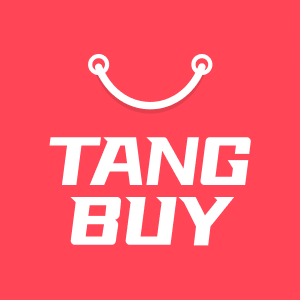How to Increase Sales in Dropshipping

Ready to increase sales and grow your dropshipping shop? You can achieve this by making small, smart changes. Many shop owners face issues such as slow shipping, supplier delays, and customers abandoning their carts.
Challenge | Explanation |
|---|---|
Supplier Reliability | 84% find it difficult to secure reliable suppliers; delays and poor quality reduce sales. |
Inventory Management | Maintaining the right stock levels is challenging; having too little or too much stock causes problems. |
Shipping Times | Lengthy delivery times lead 70% of shoppers to abandon their carts. |
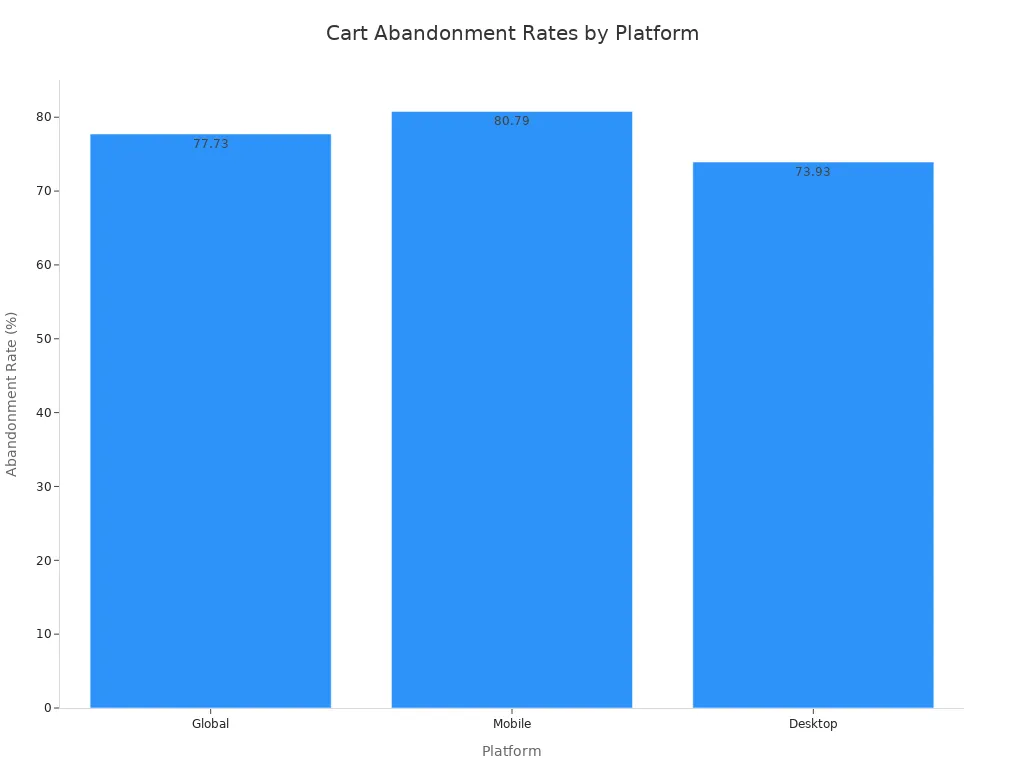
You can overcome these challenges with better targeting, a user-friendly shop, and clear messaging. Start now—each step will help you increase sales and move closer to genuine growth.
Key Takeaways
Learn about your target audience by making customer avatars. Test ads to see who likes them most.
Pick products that make money by using trend tools. Focus on niches to be different and gain trust.
Make your store look professional with special descriptions and good photos. Use clear calls-to-action and make it easy to use.
Show real customer reviews and photos to build trust. Add trust badges to help people feel safe and stop them leaving their carts.
Use SEO, social media, email, and paid ads wisely to get visitors. Bring back shoppers who showed interest.
Make people hurry with limited-time offers and low stock alerts. This helps them decide to buy faster.
Give discounts, bundles, and upsells to raise order value. Make customers feel they get more for their money.
Give fast and friendly customer service with clear rules. This keeps shoppers happy and makes them return.
Work with good suppliers and test products to avoid problems. Manage your stock well to stop delays.
Watch important numbers and do A/B tests. Listen to what customers say to keep making your shop and sales better.
Audience and Product Selection
Choosing the right audience and products is the first step if you want to increase sales in dropshipping. Let’s break down how you can do this with confidence.
Define Target Audience

Customer Avatars
Start by picturing your ideal customer. Who are they? What do they care about? You can use the quick testing method to find out. This means you run several small ads, each aimed at a different group. After a few days, you check which group responds best. You stop the ads that don’t work and focus on the ones that do. This helps you quickly find your best audience, especially if you use Facebook Ads.
Here’s a handy table to help you build your customer avatar:
Factor | What to Consider |
|---|---|
Age | Are they teens, adults, or seniors? |
Gender | Do your products appeal more to men or women? |
Income | Can they afford your products? |
Location | Where do they live? |
Occupation | What jobs do they have? |
Interests | What hobbies or passions do they have? |
Values | What matters most to them? |
Lifestyle | How do they spend their time? |
Behaviour | How do they shop online? |
Market Demand
You need to know if people actually want what you plan to sell. Use these sources to check demand:
E-commerce tools like Sell The Trend show you sales data and profit margins.
Social media analytics and tools like BuzzSumo help you spot what’s trending.
Google Trends shows you what people are searching for.
Customer reviews and polls give you direct feedback.
Competitor research lets you see what’s already working.
Try running small test ads or pre-selling to see if people buy.
Choose Profitable Products
Trends and Data Tools
You want products that people want now and in the future. Tools like Sell The Trend, FindNiche, and AliExpress Dropshipping Center help you spot winning products. They show you what’s selling, how much it costs, and even how fast it ships. These tools also help you compare suppliers and check product ratings.
Tool | Core Features | Unique Point | Starting Price |
|---|---|---|---|
Sell The Trend | AI product discovery, ad generator | "The Nexus" AI, cross-platform | $39.97/month |
FindNiche | Shopify/AliExpress research, ad spy | 80M+ ads, supplier reviews | $9/month |
AliExpress Dropshipping Center | Hot-selling finder, product analysis | Free product analysis | Free |
High-Margin Items
Look for products with steady demand, not just a quick trend. High profit margins matter. Products in health and wellness, eco-friendly goods, smart home devices, and pet accessories often do well. Avoid crowded markets and low-profit items. Focus on products that solve real problems or fit current trends, like sustainability or remote work.
Niche Focus
Stand Out
Focusing on a niche helps you stand out. You can target your marketing, build trust, and keep customers coming back. Niche stores often have less competition and higher conversion rates. You can also manage your stock more easily and get suppliers on board faster. When you stick to a niche, you build a strong brand and make it easier to upsell related products.
Tip: Niche stores can adapt quickly to new trends and create content that speaks directly to their audience.
Store and Product Optimisation
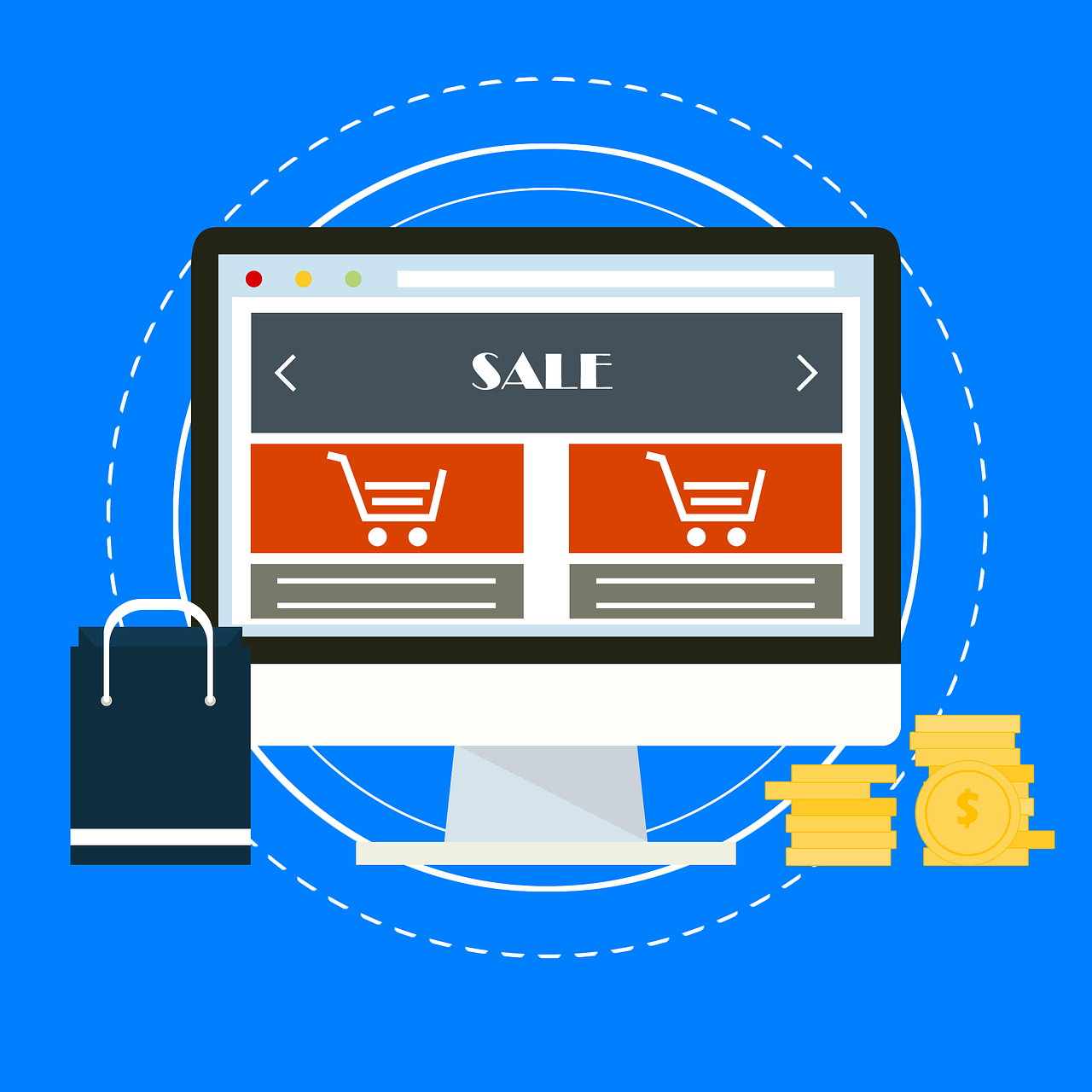
Making your shop look and feel professional is one of the quickest ways to build trust and boost your sales. Let’s look at how you can make your store stand out and turn more visitors into happy customers.
Custom Descriptions and Photos
Unique Content
You want your products to shine. Writing your own product descriptions helps you do this. When you use your own words, you can highlight what makes each item special. Generic supplier text often sounds boring and does not answer your customer’s questions. If you tell a story or explain how your product solves a problem, people will pay more attention. Custom descriptions also set clear expectations, so shoppers know exactly what they are getting. This builds trust and keeps people from leaving your site too soon.
Professional Images
First impressions matter. Most visitors do not scroll past the top of the page, so your product images must grab attention straight away. High-quality, original photos show your product in the best light. They help people see the value without reading a single word. If you use your own photos, you look more credible and trustworthy. Studies show that shops with great images see much higher conversion rates. Try to show your product from different angles and in real-life situations. This helps shoppers imagine owning it.
Tip: Custom descriptions and original photos work together to build trust, reduce bounce rates, and increase sales.
Product Page Optimisation
Clear CTAs
Your product pages need clear calls-to-action (CTAs). Use buttons like “Add to Cart” or “Buy Now” that stand out with bright colours. Place them near the top of the page, so shoppers see them right away. Make sure the text is simple and tells people exactly what to do next.
Mobile Friendly

Many people shop on their phones. Your product pages must look good and work well on any device. Use large, easy-to-tap buttons and keep forms short. Fast-loading images and readable text make shopping smooth. Responsive design means your shop adjusts to any screen size, so you never miss a sale.
Note: 85% of shoppers say images are key to their buying decision, so always check your pages on mobile before you launch.
Website Design
Easy Navigation
If people cannot find what they want, they will leave. Keep your menus simple and clear. Use categories and filters to help shoppers browse quickly. Add a search bar that works well, so customers can find products in seconds.
Fast Checkout
A slow or confusing checkout process can cost you sales. Use a one-page checkout if possible. Offer several payment options, like credit cards and PayPal, to make things easy. Show trust badges and secure payment icons to reassure shoppers. The faster and simpler your checkout, the more likely people are to finish their purchase.
Customers trust shops that look professional, offer clear information, and make buying easy. These changes will help you increase sales and keep shoppers coming back.
Social Proof and Reviews

If you want more sales, you need trust. People believe other shoppers more than brands. Showing real reviews, photos, and trust badges helps new customers feel safe. This makes them more likely to buy from your shop.
Collect Customer Reviews
Automated Requests
Getting reviews is easier if you help your customers. Use tools that send emails or texts after a purchase. These messages remind people to leave feedback while it is still fresh. Use the customer’s name and the product they bought in your message. This makes people more likely to reply.
Asking for reviews automatically gets you more feedback.
Sending messages at the right time helps more people answer.
Giving discounts or small gifts makes customers want to share their thoughts.
Asking about delivery or product fit gives useful details for new buyers.
Display Prominently
Do not hide your reviews at the bottom of the page. Put them where shoppers see them first, like near the “Add to Cart” button or at the top of your homepage. Showing reviews clearly builds trust and answers questions before people ask.
Reviews make your shop look honest and trustworthy.
They add new words to your site, which helps you show up in searches.
Real feedback, both good and bad, makes your shop seem real.
Reviews answer common worries and help stop people leaving their carts.
Tip: Real reviews help shoppers feel connected. People trust stories from others like them.
User-Generated Content

Photos and Testimonials
Ask your customers to share photos and stories about your products. Let them upload pictures or write testimonials on your product pages. Hashtag campaigns on social media work well too. When people see real photos and honest words, they trust your shop more.
Asking for photos and stories makes it easy for customers to share.
Give rewards, like a discount, to get more people to send content.
Use hashtags to build a group and make your shop more visible.
Put photo galleries and stories high on the page so everyone sees them.
Apps like Loox or Yotpo help you collect and show user content on your shop.
Note: Always ask before sharing customer photos or stories, especially if you give rewards.
Trust Badges
Secure Payment

Trust badges show shoppers your shop is safe. Add badges for SSL certificates, safe payment options like PayPal or Visa, and well-known security seals such as Norton or McAfee. Put these badges on your homepage, product pages, and checkout. This helps stop worries about payment safety and identity theft.
Guarantees
Money-back guarantees and clear refund rules are trust badges too. Showing these promises means you stand by your products. More than half of shoppers only buy from shops with clear refund rules. Trust badges and guarantees together can help you get more sales.
Trust Badge Type | Why It Matters |
|---|---|
SSL/Security Seals | Make shoppers feel safe about payment and data |
Payment Logos | Show you take trusted payment methods |
Money-Back Guarantee | Lower risk and make buyers feel sure |
Customer Review Badges | Give quick proof and build trust |
Shoppers feel safer and more ready to buy when they see trust badges and real reviews. These small things can turn visitors into loyal customers.
Marketing to Increase Sales

SEO and Content
Keyword Optimisation
You want people to find your shop when they search online. SEO (Search Engine Optimisation) helps you do this. SEO drives 37.5% of all ecommerce site traffic, so it is a big deal if you want to increase sales. Start with keyword research. Look for words your customers use but avoid the most popular ones because they are hard to rank for. Tools like Google Keyword Planner or Ubersuggest help you spot these hidden gems.
Here is a simple plan to boost your SEO:
Find low-competition keywords that match your products.
Check what keywords your competitors use.
Make sure your website loads quickly and is easy to use.
Optimise your titles, meta descriptions, and product pages.
Write helpful content about your niche.
Get other websites to link to your shop.
Use tools like Yoast SEO to check your work.
Tip: Avoid duplicate content and always check your shop on mobile. Google loves fast, mobile-friendly sites.
Blogging and Video
Blogging and video content help you answer customer questions and show your products in action. When you write blog posts about your niche, you attract people who want to learn or solve a problem. For example, if you sell fitness gear, write about workout tips or healthy habits. This builds trust and brings more visitors to your shop.
Videos work even better for some products. You can show how to use an item, share customer stories, or give quick tips. People love watching short, helpful videos on social media and YouTube. Try mixing blog posts, videos, and even infographics to keep things fresh.
Content Marketing Type | Description & Role in Driving Sales |
|---|---|
Blog Content Marketing | Write helpful posts to answer questions and boost traffic. |
Video Marketing | Show products in action, share tips, and build trust. |
Infographic Marketing | Use visuals to explain ideas quickly and get more shares. |
Work with trusted people to reach new customers. |
Note: Good content makes your shop easier to find and gives shoppers a reason to trust you.
Social Media

Platform Engagement
Social media is where your customers hang out. Facebook and Instagram give you the best return on investment for dropshipping. They both have a 29% ROI, making them top choices for your marketing. Use these platforms to share product photos, run giveaways, and answer questions. TikTok and YouTube also work well, especially if you like making videos.
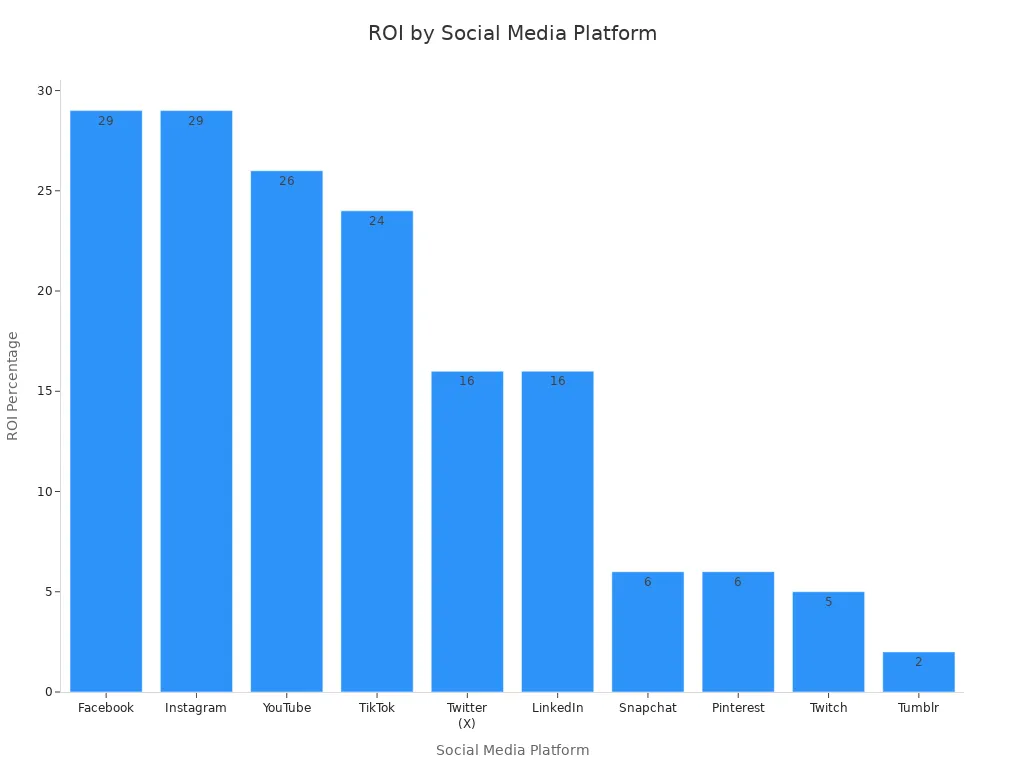
Try these ideas to boost engagement:
Post regularly with eye-catching photos or short videos.
Use hashtags to reach more people.
Reply to comments and messages quickly.
Run polls or ask questions to start conversations.
Customers trust shops that talk with them, not just at them.
YouTube Presence
YouTube is a great place to show off your products. You can make unboxing videos, how-to guides, or share customer reviews. People use YouTube to search for products and learn before they buy. If you post helpful videos, you build trust and get more visitors to your shop.
Tip: Keep your videos short and clear. Add links to your shop in the video description.
Email and SMS
Campaigns
Email and SMS help you stay in touch with your customers. Send regular emails with new products, tips, or special offers. Segment your list so each person gets messages that matter to them. SMS works well for quick updates or flash sales because people read texts right away.
Use catchy subject lines to get more opens.
Personalise your messages with the customer’s name.
Offer exclusive deals to your subscribers.
Abandoned Cart
Many shoppers leave without buying. You can win them back with smart email and SMS campaigns. Send a reminder soon after they leave. Offer a small discount or let them know stock is running low. SMS works best because people open texts fast—open rates reach 98%, and reply rates are high too.
Send a message within an hour of cart abandonment.
Use urgency, like “Only 2 left!” or “Sale ends soon.”
Add a direct link back to their cart.
Keep messages short and friendly.
Note: Recovering abandoned carts is one of the easiest ways to increase sales without spending much.
Paid Ads and Retargeting

Paid ads can help you reach new customers fast. You do not have to wait for people to find your shop. You can show your products to the right people at the right time. Let’s look at how you can use Facebook, Instagram, and retargeting to increase sales.
Facebook/Instagram Ads
Facebook and Instagram are great places to run ads for your dropshipping shop. These platforms let you target people by age, interests, location, and even what they have bought before. You can start with a small budget and test what works best.
Here’s how you can get started:
Pick one product or offer to promote. Choose something with good reviews and clear photos.
Use eye-catching images or short videos. Show your product in use or highlight its best feature.
Write a simple headline. Tell people what problem your product solves.
Add a clear call-to-action, like “Shop Now” or “Get Yours Today”.
Set your audience. Try targeting people who like similar brands or follow your competitors.
Start with a small daily budget. Watch how your ad performs and adjust as needed.
Tip: Test different images, headlines, and audiences. Small changes can make a big difference in your results.
You can also use Facebook’s “Lookalike Audience” tool. This helps you find new people who are similar to your best customers. It’s a smart way to reach shoppers who are more likely to buy.
Retargeting Strategies
Most people will not buy the first time they visit your shop. Retargeting helps you bring them back. You can show ads to people who have visited your website, added items to their cart, or watched your videos.
Here are some easy retargeting ideas:
Show ads to people who left items in their cart. Remind them what they are missing.
Offer a small discount or free shipping to bring them back.
Use dynamic ads. These show the exact products people viewed on your site.
Remind past buyers about new arrivals or special offers.
Retargeting Method | What It Does | When to Use |
|---|---|---|
Cart Abandonment Ads | Remind shoppers to finish checkout | After someone leaves cart |
Product View Ads | Show products people looked at | After browsing |
Past Customer Ads | Bring back happy buyers | For new launches |
Note: Retargeting ads often cost less and convert better than regular ads. You spend less but get more sales.
If you use paid ads and retargeting together, you can increase sales and make the most of your marketing budget.
Urgency, Discounts, Upsells
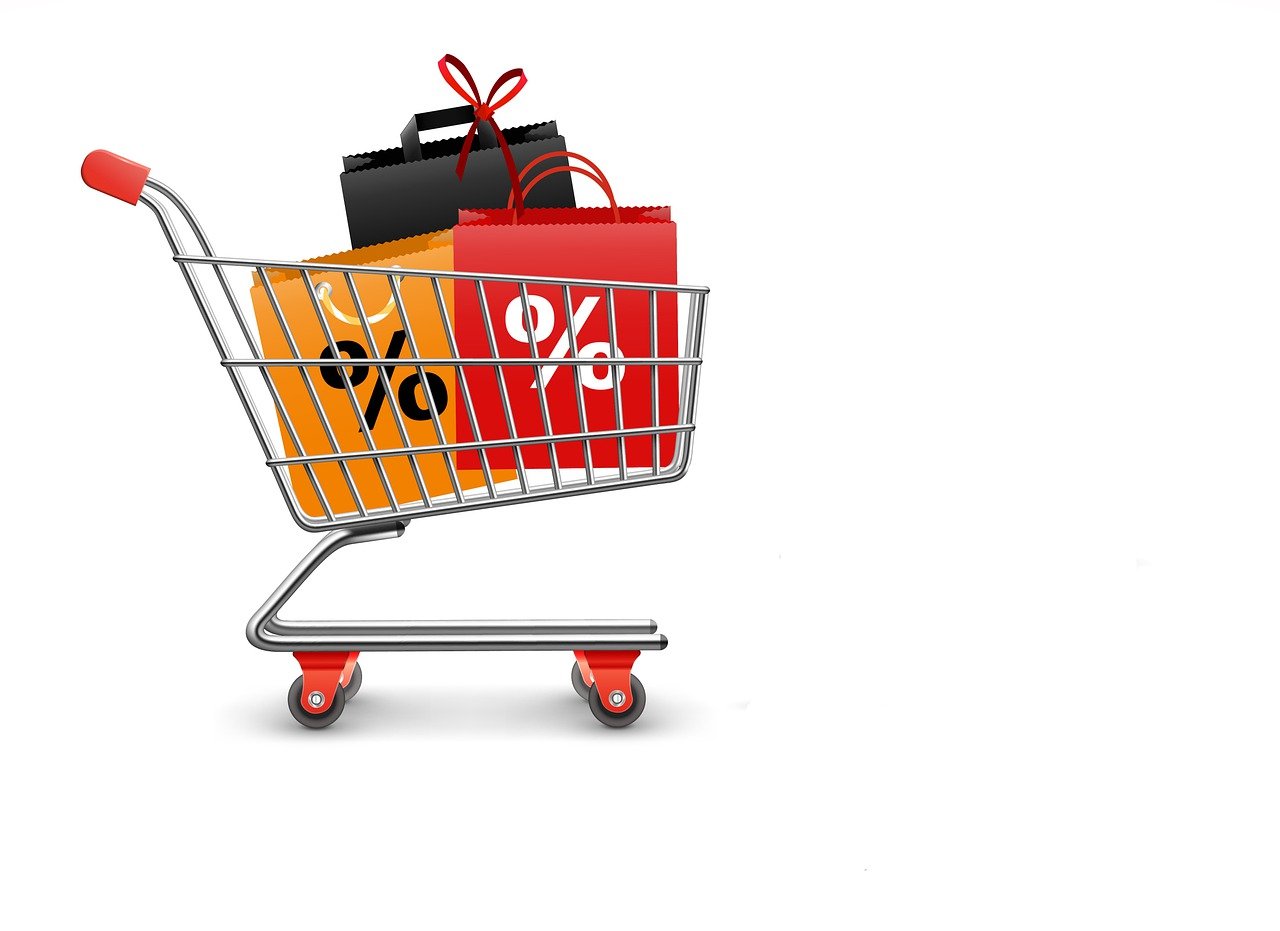
Making shoppers feel like they need to buy soon, giving good discounts, and suggesting extra products can help turn visitors into buyers. Let’s see how these ideas can help your shop do better.
Create Urgency
Limited-Time Offers
When shoppers see that time is running out, they want to buy quickly. You can use countdown clocks, flash sales, or banners that say “Ends Tonight!” These tricks work because people do not want to miss a deal. Here is why urgency works:
People do not like missing out on savings.
When there is not much time or stock, things seem more special.
FOMO makes shoppers hurry so they do not miss what others get.
Even if the deadline is not real, people still act fast.
Urgency helps shoppers decide instead of waiting.
A simple clock or a message like “Only 2 hours left!” can make someone buy now.
Low Stock Alerts
Telling customers when stock is low can make them buy faster. Try messages like “Only 3 left in stock!” or “Almost gone!” This uses the idea that rare things are more wanted. If you show real stock numbers, it feels more real. But do not use these tricks too much, or people might stop trusting them.
Tip: Show how many people have bought or looked at an item to mix urgency with social proof.
Discounts and Coupons
First-Time Offers
Everyone likes saving money, especially new shoppers. Giving a discount to first-time buyers can help them try your shop. You could use a pop-up that gives 10% off when someone signs up for your newsletter. This helps you get more sales and grow your email list.
Discount Type | Description | Tips and Benefits |
|---|---|---|
First-time Shopper Offer | Discount for new customers, often for sign-ups | Makes people less worried and builds trust |
Free Shipping | No delivery fee for orders over a set amount | Stops people leaving and makes them spend more |
Bundling | Buy more, save more (e.g., “2 for 1” deals) | Makes people buy more and feel happy |
Exit-intent Offers | Discount shown when someone tries to leave the site | Saves sales and keeps shoppers interested |
Bundles
Putting products together in a bundle gives shoppers more for their money. For example, you could offer “Buy two, get one free” or make special packs. Bundles feel like a good deal and help you sell more. They also help you sell new or slow products.
Note: Simple discounts and bundles are easy to use and can really help your sales.
Upsell and Cross-Sell
Product Recommendations
Upselling and cross-selling help you make more from each order. When you suggest a better product or something extra, you help customers get more. Big shops like Amazon use these ideas a lot—suggestions make up a big part of their sales.
Upselling: Offer a better or bigger product.
Cross-selling: Suggest things that go with what is in the cart.
Put suggestions under the “Add to Cart” button or in the basket.
Use pop-ups or emails after buying to remind shoppers about extras.
You can use apps to show the right products at the right time. Looking at what people buy together helps you make better suggestions.
Free Shipping Thresholds
Giving free shipping when people spend over a certain amount is a great way to get bigger orders. Show a bar in the cart so shoppers see how close they are to free delivery. This small push often makes people add more to their basket.
Shoppers feel happy when they get free shipping or a special deal, so they are more likely to come back.
Customer Service and Retention
Good customer service makes people want to shop again. When you help customers quickly and treat them well, they come back. This can turn a one-time buyer into a loyal fan. Let’s see how you can make your support better and build trust.
Fast Support
Live Chat

Live chat lets customers get answers right away. People like getting help fast, especially when shopping online. You can add a chat box to your shop. This lets visitors ask questions without leaving the page. It makes your shop feel friendly and open. Many dropshipping shops use live chat or AI chatbots. These tools answer common questions any time of day. If you cannot be online, set up auto-replies. This tells customers when you will reply.
Response Times
Quick replies show you care about your customers. Shoppers want answers in minutes, not hours. Try to answer messages and emails as soon as you can. Support software or ticket systems help you track your reply speed. Fast help makes people feel important. It also stops them from shopping somewhere else.
Here is a table showing what makes customer support good:
Key Element | Description |
|---|---|
Clear Communication Channels | Offer email, live chat, and social media support. Tell customers when they can expect a reply. |
Efficient Issue Resolution | Solve problems quickly and take responsibility. Don’t blame suppliers. |
Personalisation | Use the customer’s name and remember their past orders. |
Active Listening & Empathy | Listen carefully and show you understand their concerns. |
Customer Service Tools | Use chatbots, helpdesk software, and templates to save time and keep answers consistent. |
Tip: Friendly and fast support can turn a bad situation into a good review.
Clear Policies
Shipping and Returns
Clear shipping and return rules help shoppers feel safe. When you explain delivery times, costs, and returns, you remove worries. Most people check return rules before buying. If your rules are easy to find and simple, you get more sales and better reviews.
Aspect | Clear Shipping and Return Policies | Unclear or Restrictive Policies |
|---|---|---|
Customer Anxiety | Reduced anxiety and uncertainty | Causes anxiety and uncertainty |
Purchase Likelihood | Encourages purchases | Discourages purchases |
Customer Confidence | Boosts confidence and trust | Lowers confidence and trust |
Repeat Business | Increases repeat purchases | Leads to lost sales |
Reviews | Positive reviews and recommendations | Negative reviews harming reputation |
Easy returns and quick refunds are important. Over half of shoppers spend more if refunds are fast. Free return shipping and clear time limits, like “30 days to return”, make people buy again.
Privacy
You must keep your customers’ data safe. Show a clear privacy policy on your website. Explain how you use and store their information. When people trust you with their details, they feel safer shopping with you.
Loyalty Programmes
Rewards
Loyalty programmes give shoppers rewards for coming back. You can use points, levels, or paid memberships. Points let customers earn rewards for every order. Tiered programmes give bigger rewards to your best customers. Referral programmes reward people for inviting friends. This helps your shop grow.
Points-based: Earn points for shopping and use them for discounts.
Tiered: Get better rewards as you spend more.
Paid membership: Pay for special perks.
Referral: Get rewards for bringing new shoppers.
Gamified: Earn badges or finish challenges for extra fun.
Return customers spend more than new ones. Good loyalty programmes keep people coming back and spending more.
Personalised Offers
Personal touches make your loyalty programme even better. Send special deals based on what your customers like or bought before. Use their name in emails and suggest products they might enjoy. Most shoppers feel more loyal when you offer rewards that match their interests.
Note: Check how often people come back, how much they spend, and how many rewards they use. Personal rewards and simple rules make your shop stand out.
Supplier and Inventory Management

If you manage suppliers and inventory well, your shop runs better. This helps you avoid running out of stock and keeps customers happy. You will not lose sales if you do this right. Let’s see how you can build a strong supply chain and keep good products in your shop.
Reliable Suppliers
Vetting
Picking the right suppliers is very important. You want partners who send orders on time and have good products. Here is a table to help you check if a supplier is good:
Criteria | Explanation |
|---|---|
Positive Reputation & Reviews | Find suppliers with good reputations, lots of positive reviews, and high ratings. |
High-Quality Products | Make sure their products meet standards and check the packaging. |
Right Pricing & Profit Margins | Compare prices and look for long-term value, not just the cheapest. |
Extensive Shipping Options | They should offer different shipping choices at fair prices. |
Responsive Communication | Pick suppliers who answer messages quickly and clearly. |
Clear Return & Exchange Policies | Their return rules should be simple and work for your shop. |
Dropshipping Experience | Choose suppliers who know dropshipping. They fix problems faster and help you more. |
Detailed Descriptions & Images | Good suppliers give clear product details and good images. |
Legal Compliance & Certifications | Products must follow the law and have the right certificates. |
Testing Products
Always test a product before you sell it. Order a sample to check the quality and how it looks. Make sure the product matches the photos and the description. See how fast the supplier ships and how they pack the item. Try their customer service by asking questions. This helps you find problems before your customers do.
When you test products, check for:
If the product works as it should
How strong and safe it is
If it looks nice
Tip: Testing products helps you avoid bad reviews and returns.
Inventory Control
Order Management Tools
You must keep track of your stock, even if you never see the products. Use inventory software that links with your suppliers. This keeps your stock levels correct and stops you selling things you do not have. Real-time syncing means your shop always shows what is in stock.
Here is how you can manage your inventory:
Pick suppliers who update their stock often.
Sync your shop’s stock with your suppliers in real time.
Use software to track orders and returns for you.
Use past sales to guess what you will need.
Process orders quickly so customers stay happy.
Back-in-Stock Alerts
Set up alerts for when stock is low or gone. Your system can send you a message when you need to reorder. This gives you time to buy more or swap in another product. You can also let customers sign up for back-in-stock messages. This keeps them interested and brings them back to your shop.
Note: Using automatic inventory tools helps you avoid selling out and keeps customers happy.
Quality Assurance
Product Samples
Quality is very important. Always order samples from new suppliers. Check the materials, how it works, and if it looks good. Make sure it is safe to use. If you find problems, fix them before you start selling.
Multiple Suppliers
Do not use just one supplier. If they run out or are slow, your shop has problems. Work with more than one supplier for your best products. This gives you a backup if something goes wrong. You can also compare quality and prices to get the best deal.
Good quality checks mean fewer returns, happier customers, and more repeat sales. When you focus on quality and good suppliers, people trust your shop.
Analyse and Improve
If you want your dropshipping shop to grow, you need to keep improving. Analysing your results helps you spot what works and what needs fixing. Let’s look at how you can track your progress and make smart changes.
Track Metrics
You can’t improve what you don’t measure. Tracking the right numbers shows you where your shop is strong and where you can do better. Here are some of the most important metrics to watch:
Profit Margin – Shows how much money you keep after costs.
Customer Acquisition Cost (CAC) – Tells you how much you spend to get a new customer.
Average Order Value (AOV) – Measures how much shoppers spend each time they buy.
Conversion Rate (CVR) – Shows what percentage of visitors actually buy something.
Customer Lifetime Value (CLV) – Predicts how much a customer will spend over time.
Conversion Rate
Conversion rate is one of the most important numbers for your shop. It tells you how many visitors turn into buyers. If your conversion rate is low, you might need to improve your product pages, checkout process, or trust signals. Even a small increase can mean more sales without extra traffic.
Order Value
Average order value shows how much each customer spends per order. If you want to boost this number, try bundles, upsells, or free shipping thresholds. When shoppers spend more each time, your profits grow faster.
Tip: Keep an eye on your cart abandonment rate too. If lots of people leave without buying, check for hidden costs or a slow checkout.
A/B Testing
A/B testing helps you find out what works best. You show two versions of a page or offer to different visitors and see which one gets better results.
Store Design
You can test things like product images, descriptions, call-to-action buttons, and page layouts. Maybe a bigger “Buy Now” button or a new product photo will get more clicks. Try changing one thing at a time so you know what makes the difference.
Pricing
Testing prices can help you find the sweet spot. You might try different price points, discounts, or bundles. Some shops use apps to test prices, but you can also use discount codes or special offers. Always plan your tests and check the results before making big changes.
What to Test | Why Test It? |
|---|---|
Product Images | See which photos get more sales |
Button Colours | Find out what grabs attention |
Price Points | Discover what shoppers will pay |
Bundles/Discounts | Test which deals boost order value |
Note: Always set a clear goal before you start testing. This helps you make decisions based on real data.
Customer Feedback

Listening to your customers is key. Their feedback shows you what’s working and what needs fixing.
Surveys
You can collect feedback with post-purchase surveys, reviews, and polls. Add feedback forms to your website or send quick surveys by email. Some shops use chatbots or voice bots to get real-time feedback. Offer a small reward, like a discount, to encourage more responses.
Implement Changes
Don’t just collect feedback—act on it. Update your product descriptions or FAQs if you spot common questions. Share feedback with your suppliers to fix quality or shipping issues. Train your support team on new problems. Use help desk tools to track feedback and spot trends. When you make changes based on what customers say, you build trust and keep people coming back.
Happy customers leave good reviews and tell their friends. Keep improving, and your shop will keep growing.
You now have a clear path to increase sales in your dropshipping shop. Start by knowing your audience, choosing the right products, and making your store easy to use. Use reviews, smart marketing, and strong customer service. Test what works and keep improving. Take action today and watch your results grow. Have you tried any of these tips? Share your story or ask a question in the comments below!
FAQ
What is dropshipping?
Dropshipping lets you sell products online without keeping stock. You list items in your shop. When someone buys, your supplier ships the product straight to your customer. You never handle the product yourself.
How do I find winning products for my shop?
You can use tools like Sell The Trend or Google Trends. Look for products with steady demand and good reviews. Test new items with small ads. Watch what your competitors sell.
Why do customers abandon their carts?
Many shoppers leave because of high shipping costs, slow delivery, or a complicated checkout. Sometimes, they just change their mind. You can fix this by offering free shipping, making checkout easy, and sending reminder emails.
How can I make my shop look more trustworthy?
Add real customer reviews, clear return policies, and trust badges. Use high-quality photos and write your own product descriptions. Show that your shop is safe and honest.
Do I need to register a business for dropshipping?
You should check your country’s rules. Most places want you to register your business if you plan to sell regularly. This helps with taxes and builds trust with suppliers.
What should I do if a supplier sends a faulty product?
Contact your supplier right away. Ask for a replacement or refund. Tell your customer what is happening and offer a solution. Good communication keeps your customers happy.

TangBuy: A Smarter Way to Dropship in 2025
If you're looking to stay competitive with dropshipping in 2025, speed and trend-awareness are key. TangBuy helps you stay ahead with real-time product trends, fast fulfilment, and factory-direct sourcing. With over 1 million ready-to-ship items, 24-hour order processing, and seamless Shopify integration, TangBuy makes it easier to test, scale, and succeed in today's fast-moving eCommerce landscape.
See Also
Ways To Manage Shipping Expenses In Your Dropshipping Venture
Easy Methods To Earn Income Dropshipping On eBay In 2025
Essential Advice For Achieving eBay Dropshipping Success In 2025
Complete Walkthrough To Start Your Dropshipping Business In 2025
